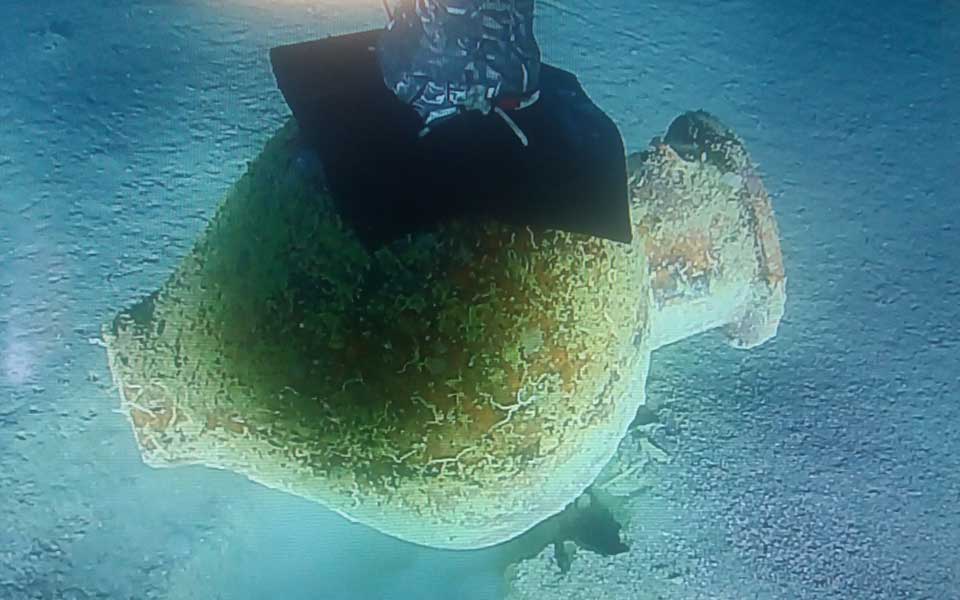The discovery of a deepwater shipwreck in the southern Adriatic Sea is helping to shed new light on the early trade links between ancient Greece and southern Italy, an area known as Magna Graecia or “Greater Greece” in antiquity.
In a recent announcement by the Italian Ministry of Culture, the wreck was first identified in 2019 at a depth of 780 meters in the Otranto Straits, the narrow sea channel that separates the “heel” of Italy in Apulia and southwest Albania. The wreck site consists of a visible scatter of over 200 ceramic artifacts sitting on the seabed, including various types of transport containers and drinking cups. Many more are likely to buried under the thick marine sediments.
The site was found during the submarine construction works for the Trans Adriatic Pipeline (TAP), a natural gas pipeline that will transport gas from Azerbaijan to Italy via Greece. Located with the use of highly sophisticated underwater vehicles commonly used in the offshore oil and gas industry, the discovery was hailed by chief underwater archaeologist Barbara Davidde as one of “exceptional importance.”
With technical and financial support from TAP, members of the Italian Superintendency for Underwater Cultural Heritage embarked on a project to explore the wreck site and raise a sample of finds to date its cargo.
Over the course of the first season, the team raised 22 ceramic vessels using the robotic arm of a deepwater ROV (remotely operated vehicle). Once on the surface, the archaeologists launched into the delicate task analyzing the finds.
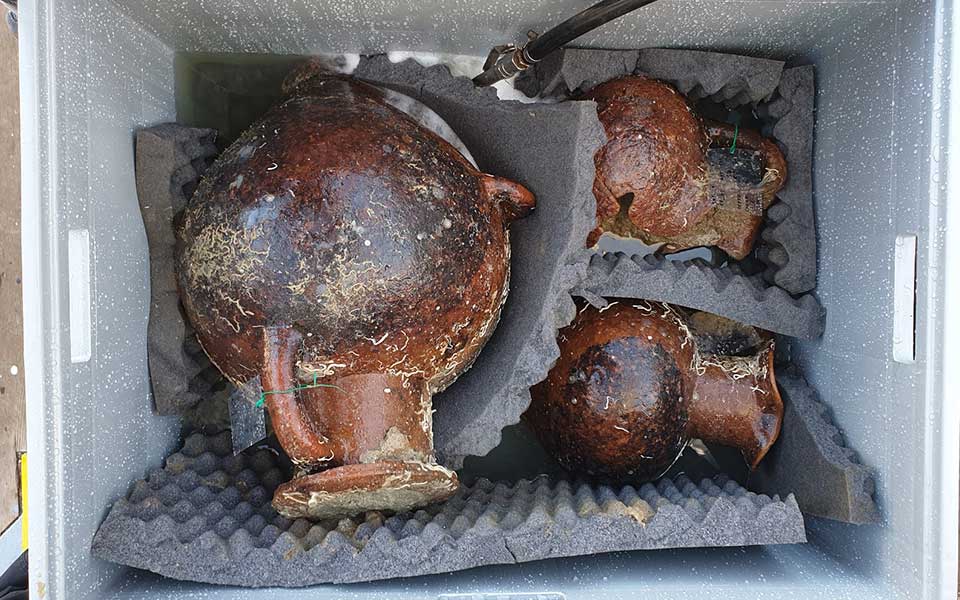
© Ministero della Cultura, Italia
Dated to the first half of the 7th century BC, the early Archaic period, the 22 vessels appear to be Corinthian in origin, including three amphorae of the Corinthian A type, 10 skyphoi (a type of two-handled drinking cup), four hydriai (water carriers), and three trilobed oinchoai (wine jugs).
Filled with marine sediments, the remains of olive pits were found in one of the amphorae.
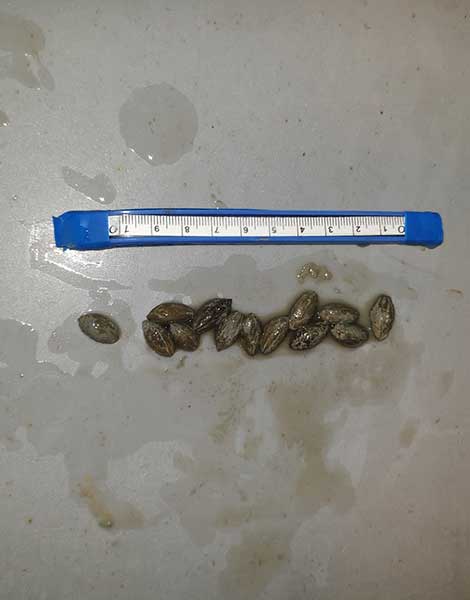
© Ministero della Cultura, Italia
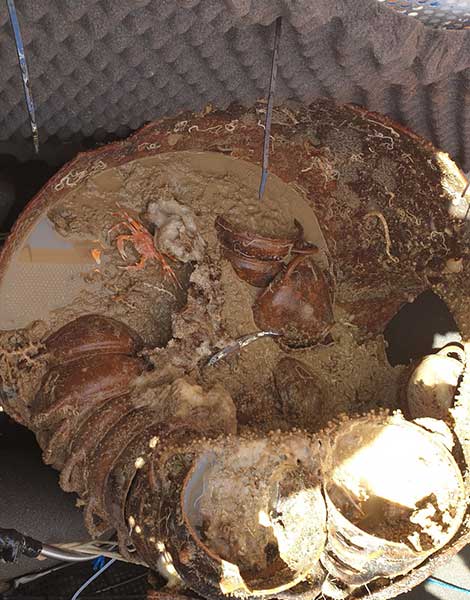
© Ministero della Cultura, Italia
“Very interesting is the pithos [large storage vessel], recovered in pieces, with its contents made up of at least 25 skyphoi neatly stacked inside in piles,” explained Davidde. These finely made wine cups would have been considered prestige goods by the Italic peoples of southern Italy at the time.
The late 8th and early 7th centuries BC witnessed the early phases of Greek colonization of the region, an area that would later become known as “Greater Greece.”
“The discovery tells us about Mediterranean trade at the dawn of Magna Graecia,” added Massimo Osanna, Director of Museums, who visited the conservation laboratory of the Superintendency of Underwater Cultural Heritage in Taranto to see the work in progress. “The cargo sheds light on the first phase of Greek colonization in southern Italy.”
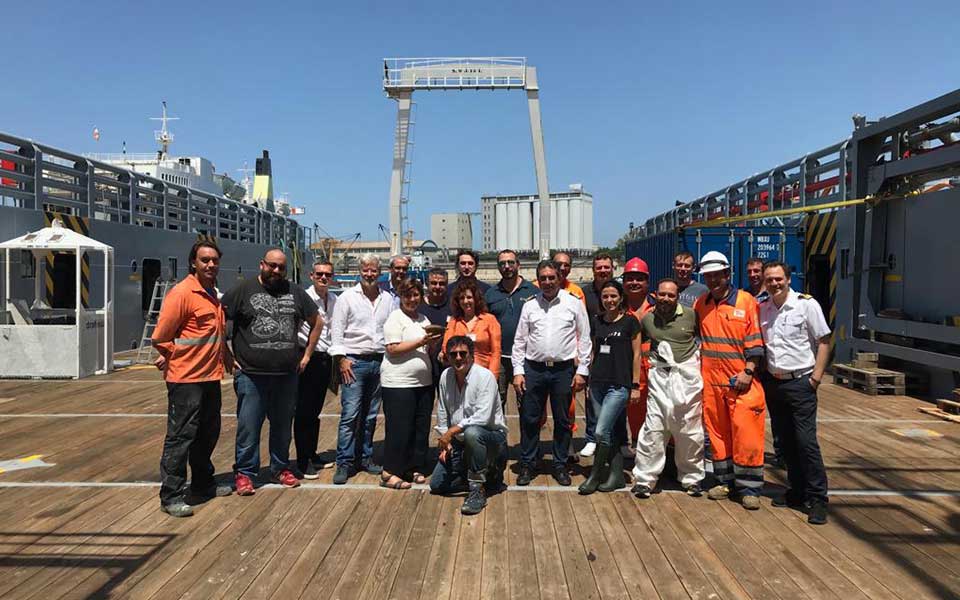
© Ministero della Cultura, Italia
The Italian Ministry of Culture is already drawing up plans to return to the deepwater wreck site to recover the entire 200-piece cargo scatter on the seabed, which has already been carefully mapped. The research team intend to conduct archaeometric analysis on the ceramic materials to more accurately establish their place of origin, and study the organic and vegetable residues that could still be present inside the vessels to determine their original contents.
In a statement, Italian Minister of Culture Dario Franceschini emphasized the recent investigations of the Otrano canal was a reminder of the importance of underwater cultural heritage in Italy: “We are a country surrounded by the sea and we have a rich submerged cultural heritage that needs to be studied, safeguarded and valued.”

